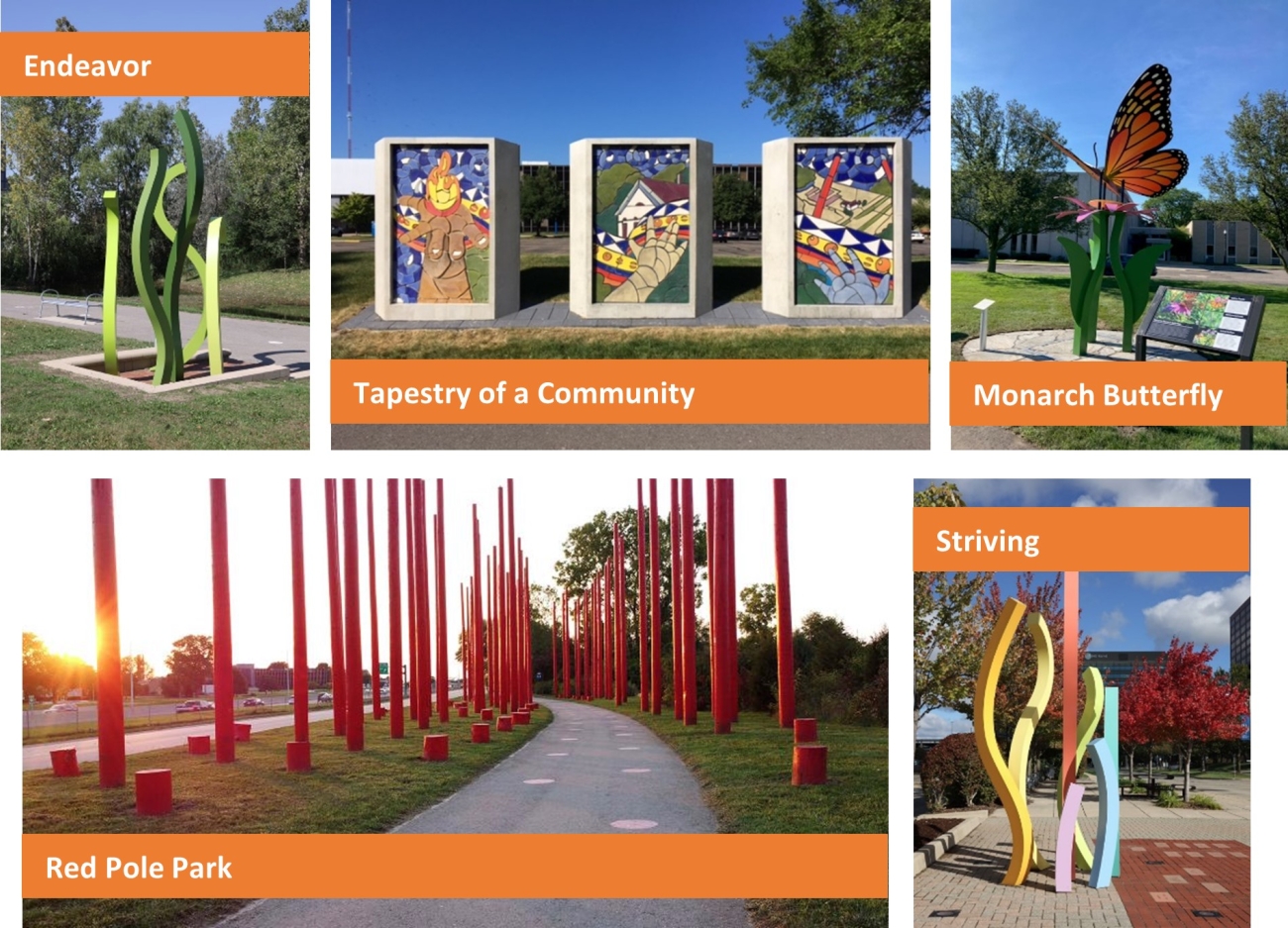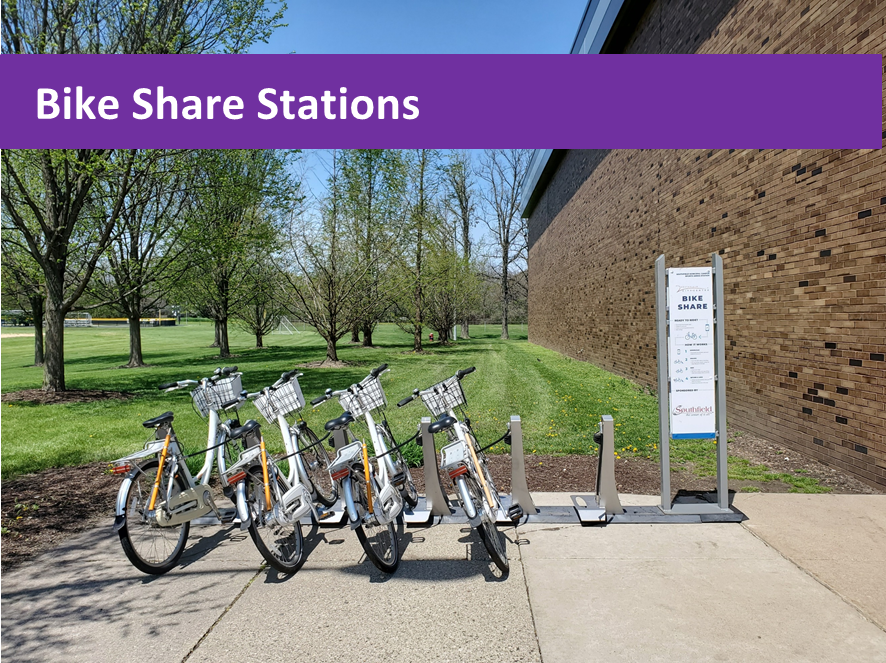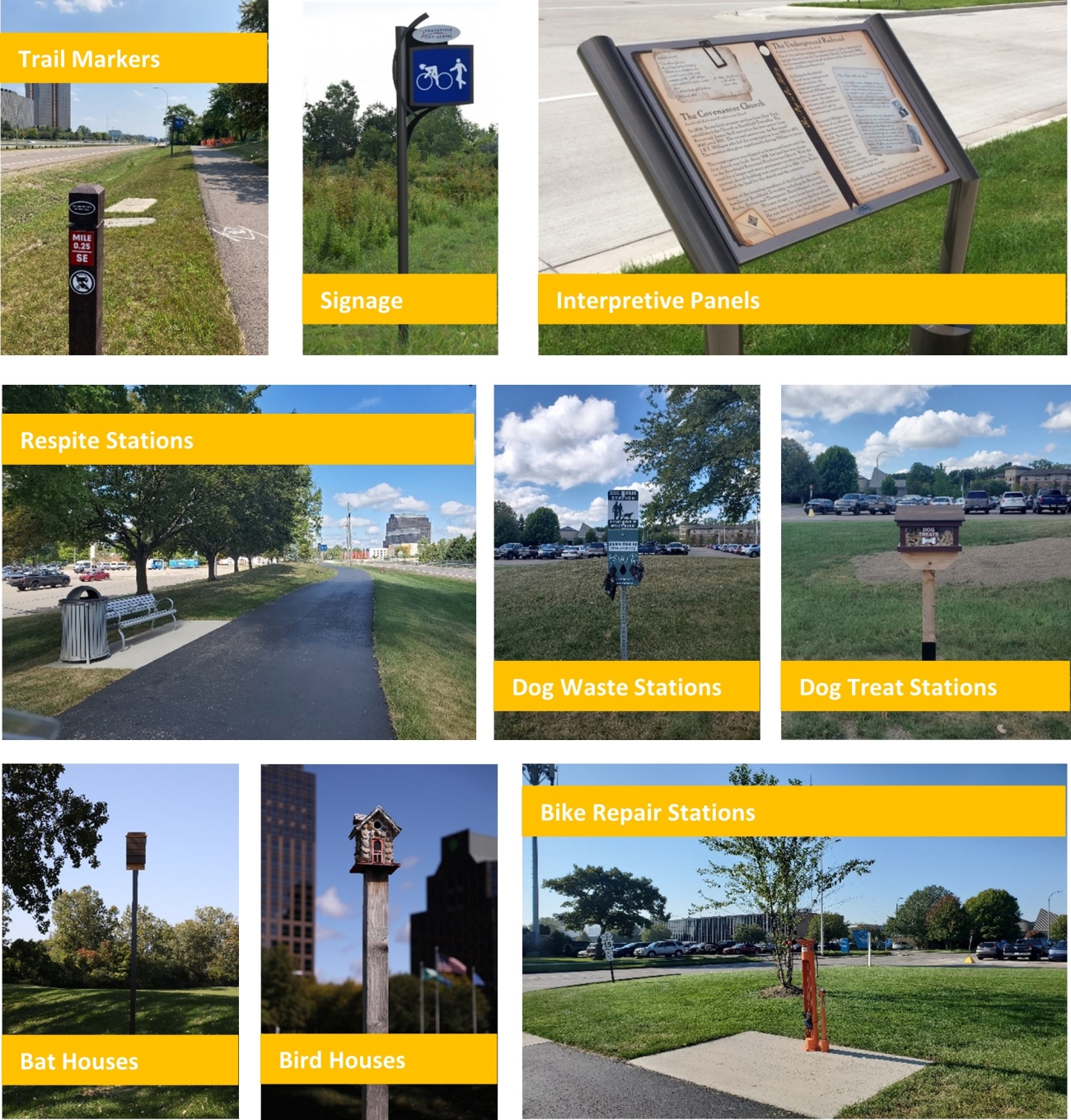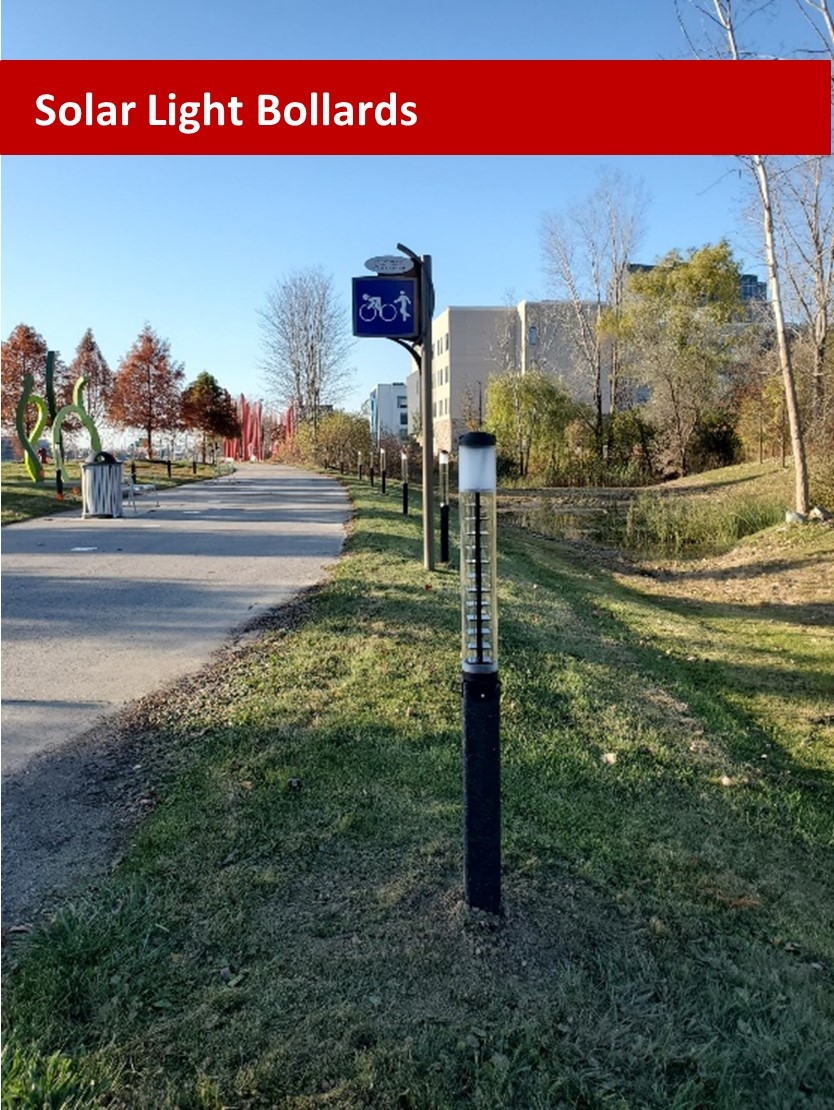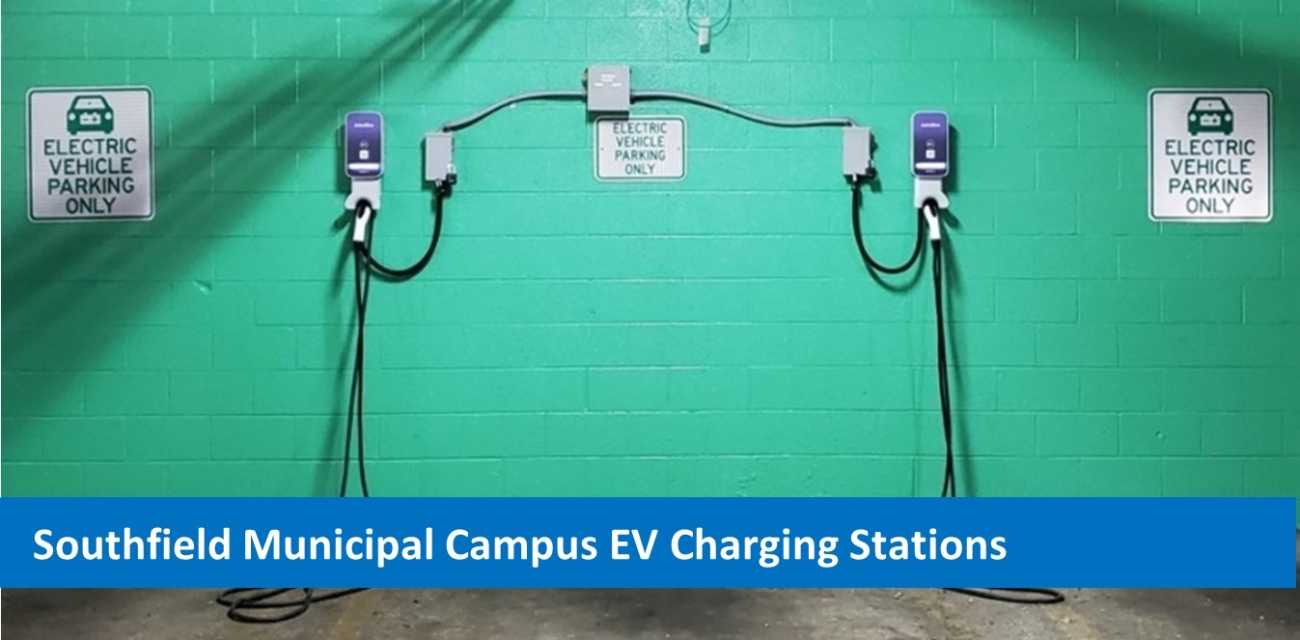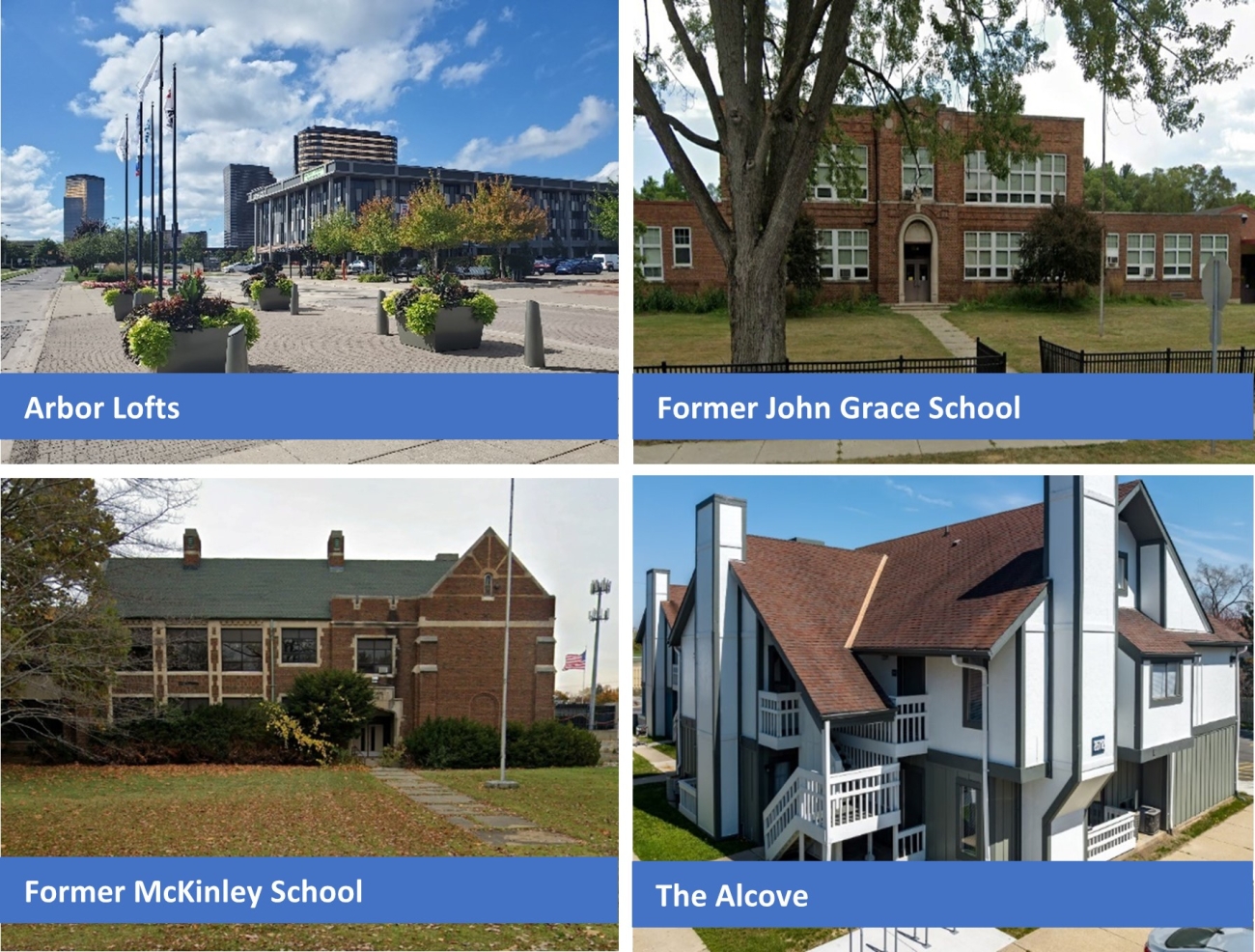Public Art
The Southfield Public Arts Commission consists of 11 members with the common purpose “to serve the public interest, convenience, and enjoyment through the promotion of the arts” and has been active since 2014. In 2016, City Council established a public art requirement for all new, large-scale real estate projects in committing to the procurement and display of public art.
To date, the City of Southfield proudly displays more than 30 pieces of art throughout various parts of the City, including the Southfield Municipal Campus. Please visit the City of Southfield Public Arts Commission page to stay informed about art projects throughout the City. These are some of the most recognized art installations:
Residents and visitors are encouraged to visit these vibrant art pieces and learn the story behind them through the interpretive panels placed along trails and pathways. The City offers a self-guided PocketSights tour that is available as an application for download on your mobile device.
Green Infrastructure
Green infrastructure is an environmentally conscious solution to manage and filter stormwater in order to prevent water pollutants from entering streams, lakes, and rivers. Runoff from urban cities is a major contributor to water pollution since automobile fluids, lawncare chemicals, leaves, grass clippings, and other debris can enter storm sewers and discharge these pollutants to bodies of water where aquatic habitat live.
Some examples of green infrastructure include rain gardens, bioretention, bioswales, green roofs, permeable pavers, rainwater harvesting systems, native planting grow zones, and tree plantings. The City of Southfield has implemented several green infrastructure elements throughout the community in efforts to protect the Rouge River Watershed. These projects include:
The City of Southfield’s Stormwater Master Plan was created to guide the management of stormwater throughout the City. The Stormwater Master Plan identifies stormwater challenges and goals that the City strives to accomplish through the implementation of various projects. To encourage the implementation of green infrastructure, the City continues to pursue grant funding and has incorporated green infrastructure and low impact requirements in the Landscaping Ordinance.
Micromobility
Micromobility is an innovative transportation option that allows people to travel from one place to another without the use of a vehicle. According to the Federal Highway Administration, micromobility is broadly defined as any small, low-speed, human or electric powered transportation device that can include bicycles, skateboards, scooters, or other small and lightweight conveyances.
To promote micromobility, the City is partnered with Movatic, a company that maintains and monitors the bike share program throughout the City Centre district. There are a total of nine bike share stations available for use. Potential riders are encouraged to download the Movatic app and utilize the promotional offers for memberships and other discounts.
Placemaking
Placemaking is a design concept that prioritizes the human experience when envisioning a place. Rather than designing a place around a building or the automobile, the way in which people experience a place is the priority. It is often thought that a great place is defined by four elements: sociability, uses and activities, comfort and image, and access and linkages. To make placemaking successful in a city, the community must be an active participant in voicing its needs.
Through public engagement activities and surveys, the City of Southfield has incorporated various placemaking elements throughout the City to enhance the quality of life for its residents and visitors. Some of these placemaking elements include:
Renewable Energy
According to the United Nations, renewable energy is energy derived from natural sources that are replenished at a higher rate than they are consumed. Sources of renewable energy include sunlight, wind, water, and organic matter. When natural sources of energy are combined with technology, sustainable power can be delivered through solar panels, wind turbines, geothermal wells, hydroelectric power, and biomass for electricity and heating/cooling purposes. The City of Southfield is exploring the best ways in which renewable energy can be incorporated in the City’s infrastructure.
Solar Lighting
The City of Southfield was selected to participate in a pilot study with an emerging company, APT Solar Solutions, dedicated to improving solar lighting technology by creating off-grid products. This technology compliments the City’s placemaking strategies along current and future non-motorized pathways by enhancing safety measures and promoting renewable energy. A total of 20 solar bollards have been installed along the pathway southeast of Red Pole Park. Ultimately, the solar lighting fixtures will make it possible to construct additional pathway segments in locations that are thought to be a deterrent to pedestrians due to limited illumination, such as under freeway overpasses or heavily wooded parks.
MIGreenPower
The City of Southfield became the first municipality in Oakland County to enroll in DTE’s voluntary renewable energy program called MIGreenPower. This program allows participants to attribute a greater percentage of their electricity use to Michigan-generated wind and solar power. All eligible City of Southfield buildings will be enrolled in this program. The City’s environmental impact of enrolling in this program is equivalent to annually taking more than 1,500 gasoline-powered cars off the road.
Trails & Pathways
The City of Southfield has been continuously striving for better non-motorized connectivity not only to provide alternative modes of transportation, but also to promote health and wellness within the community. With over 20 miles of constructed pathways in the City, residents and visitors can rely less on vehicle transportation, participate in recreational activities, and contribute to the overall sustainability of the City’s mobility network.
City Centre Trail
The Southfield City Centre Trail is a new urban greenway that brings community-desired walkability to a suburb once hostile to any form of transportation other than the car. Situated along a major urban freeway, the trail is now a welcoming venue for heart-healthy activity and provides opportunities for human-to-human and human-to-nature interactions. Forming the backbone for additional trail development, the Southfield City Centre Trail has spurred economic development and promotes civic engagement through community-building events in a space where people feel safe and welcome.
Southfield City Centre trail map
Carpenter Lake Nature Preserve
Carpenter Lake Nature Preserve was acquired by the City of Southfield in 2003 and officially opened to the public in 2008. The 42-acre preserve is a protected natural area and green space reserved for the public’s enjoyment, study of nature and wildlife, environmental education programs and fishing. The Preserve features extensive nature trails with interpretive signage, trailheads, numerous benches, and accessible fishing and viewing platforms. As of 2023, the Nature Preserve will be incorporating a small picnic shelter and restrooms to better accommodate visitors. The Preserve is located on Carpenter Lake, a six-acre impoundment of the Ravines Branch of the Rouge River. Most of the parkland is wooded with mature deciduous forest and an abundance of wildlife.
City of Southfield Carpenter Lake trail map
The Nine Mile Greenway Corridor
The Nine Mile Greenway Corridor is a proposed non-motorized pathway project made possible through collaborative efforts among several Southeast Michigan communities. The vision for this pathway project is to effectively interconnect six unique communities, weaving together a tapestry of cultural amenities and outdoor recreation opportunities. The City of Southfield in partnership with the City of Farmington Hills, City of Farmington, City of Oak Park, City of Ferndale, and City of Hazel Park have formed a task force facilitated by consulting experts to bring this vision to fruition. Upon its completion, the Nine Mile Corridor will serve as a community amenity that seamlessly links residents to numerous esteemed institutions and sought-after destinations. These include prestigious universities, cutting-edge hospitals, breathtaking parks, renowned schools, bustling downtown districts, and thriving employment centers.
Valley Woods Trail
The City is pursuing grant funding for the future improvement of the Valley Woods Trailhead. The proposed Valley Woods Trailhead project aims to be the catalyst to the future Valley Woods Nature Preserve pathway project extending from West Twelve Mile Road southwest to West Ten Mile Road. The extensive scope of the future trail will encompass trails meandering through some of the City’s most scenic natural areas along the Rouge corridor, continuing under the overpass of the Northwestern Highway/I‐696 Freeway, and finishing at the greenspace located on West Ten Mile Road just west of Telegraph Road.
Parks & Greenspace
The City of Southfield has many parks and nature preserves where you can unwind, relax, and immerse yourself in nature. It has been scientifically-proven that spending time outside has numerous benefits for physical and mental health by helping people cope with stress, lowering blood pressure, boosting the immune system, and reducing the likelihood of depression and anxiety. The most prominent parks where you can experience Southfield’s natural beauty include:
For the complete list of park locations, please visit the Park Locations page on the Parks & Recreation Department website.
EV Charging Stations
As automotive manufacturers increase the production of their electric vehicles, cities must be able to provide the necessary infrastructure to power these new modes of transportation. The City of Southfield is preparing for the increased use of electric vehicles and strategizing the best ways to implement more public charging stations. In addition, the City is planning to electrify its fleet of vehicles for employees in efforts to be more sustainable while performing daily City operations and maintenance services.
Adaptive Reuse
Adaptive reuse is the process of converting an existing structure for purposes other than those originally intended. This is a sustainable building design and construction practice because it saves on the amount of new materials used. An example of adaptive reuse is an old warehouse being converted to apartment units. The City of Southfield has several adaptive reuse projects that include:
Arbor Lofts
Arbor Lofts is multi-phase redevelopment project converted a former office building into a new residential and retail building. The top three floors are designated as apartment units with the first floor allocated as a mixed-use space including a gym, lounge, and coworking space. These lofts are located on the northwest corner of Civic Center Drive and Central Park Boulevard.
The Alcove
The Alcove is a conversion project from the former Hawthorn Suites hotel into multi-family housing units. These housing units are located on the southwest corner of West Eleven Mile Road and Evergreen Road.
Former John Grace School
The former John Grace School and Community Center is being considered for adaptive reuse as new, affordable senior housing. The City anticipates historic building renovations, site reconfiguration, and public improvements in the surrounding area.
Former McKinley School
The Mckinley school building is a 1920s historical building that has been closed for decades and periodically used by various owners. The intent of this two-phase adaptive reuse project is to provide residential condominiums within the historical building and include new two-story condominiums adjacent to the original building.
